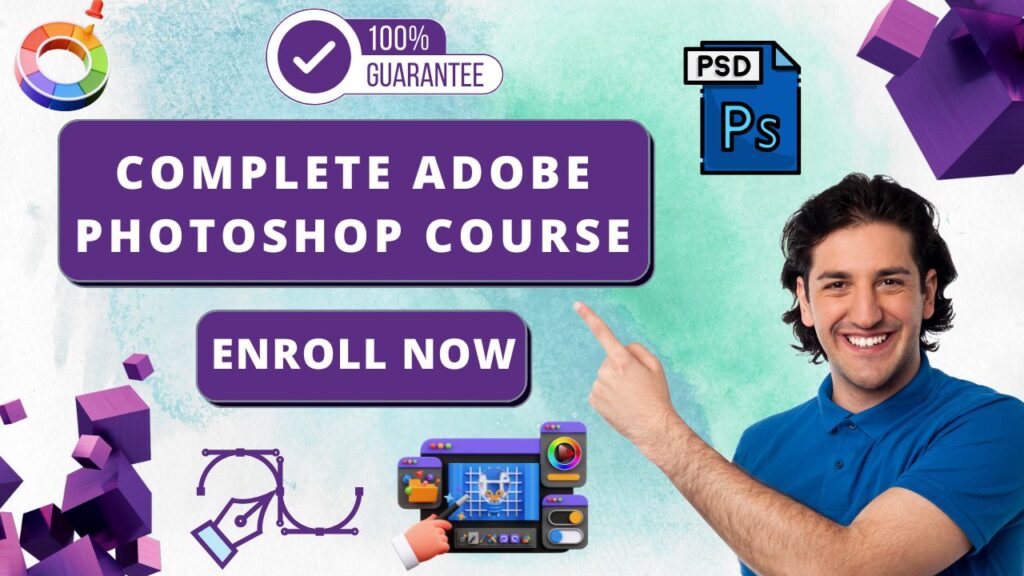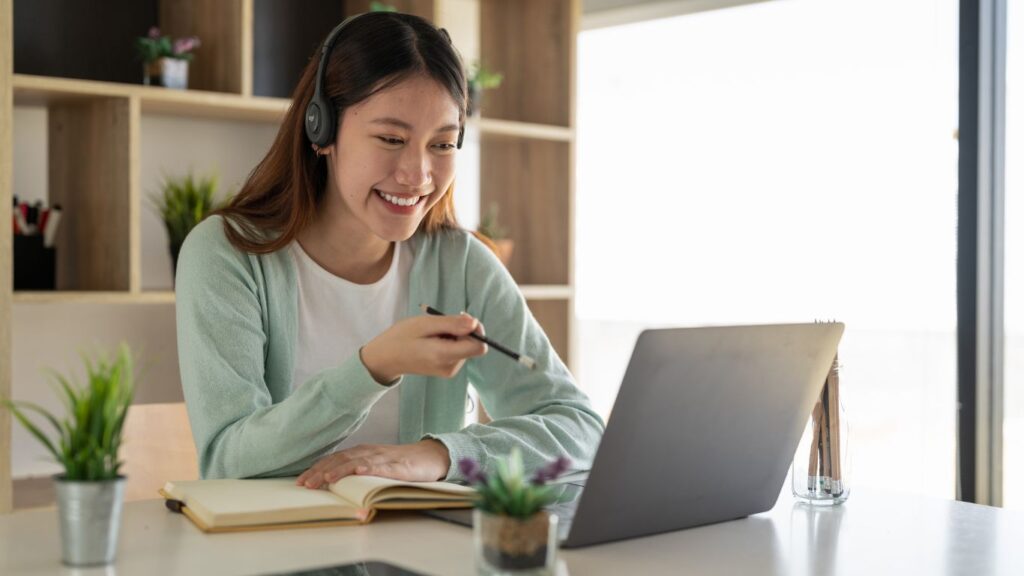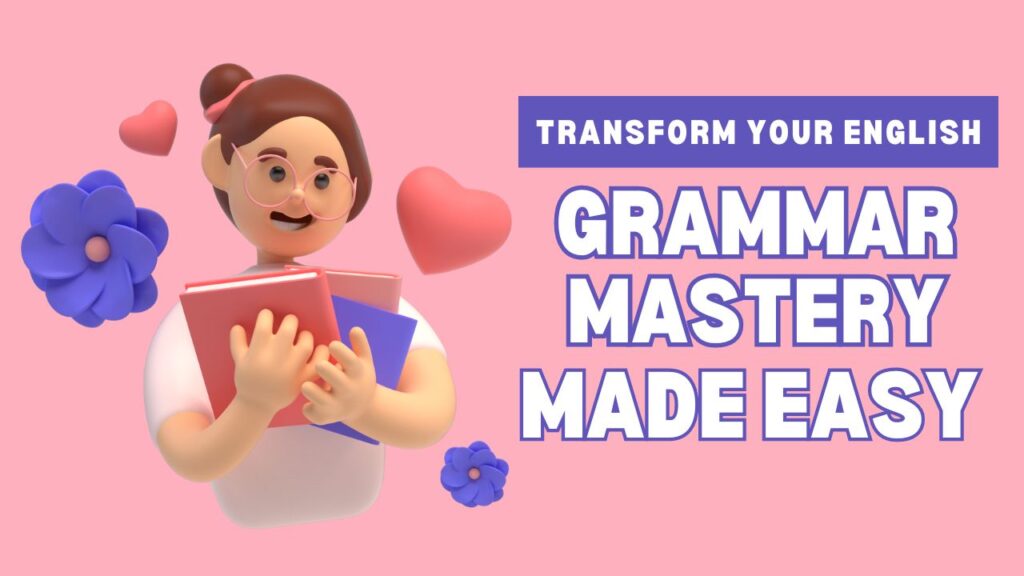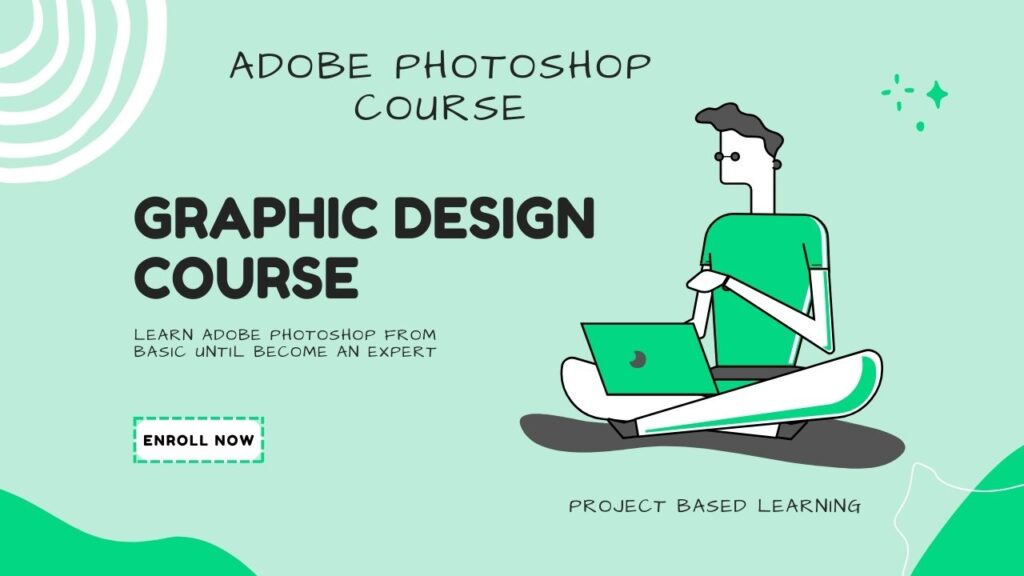If you want to know Future of Education in Pakistan. Then Join me as I share my journey through Pakistan’s e-learning revolution—overcoming doubts, mastering tools, and witnessing accessibility soar.
Explore the digital transformation of education, its challenges, and my hopes for a tech-driven future.
I still remember the jolt I felt when my world of learning flipped upside down. It was somewhere around the spring of 2020, and I was just another student in Pakistan, hunched over a desk in a noisy classroom, surrounded by the familiar hum of chatter and the scratch of pens on paper. Then, almost overnight, everything shifted.
My university told us classes were moving online, and suddenly, I was fumbling with a laptop, trying to figure out why my voice wouldn’t carry through a virtual meeting. That’s when it dawned on me: I wasn’t just adapting to a glitch in my routine—I was stepping into the digital transformation of e-learning in Pakistan, a change that would redefine how I saw education.
The switch didn’t sink in right away. When my professors first mentioned “online lectures,” I shrugged it off as a short-term hassle—something I’d grit my teeth through until we all piled back into lecture halls.
But as days stretched into weeks, I started noticing the pieces falling into place. My inbox filled with links to recorded lessons, my phone buzzed with group chats swapping notes, and I caught myself tinkering with tools I’d never touched before.
| Aspect | Details |
| Current Literacy Rate | Approximately 62.3% (2023 estimates), with significant urban-rural and gender disparities. |
| Key Challenges | 1. Limited funding (education budget ~2-3% of GDP). 2. Poor infrastructure in rural areas. 3. Teacher shortages and lack of training. 4. High dropout rates, especially among girls. |
| Emerging Opportunities | 1. Growth of EdTech (online learning platforms like Sabaq, Taleemabad). 2. Public-private partnerships. 3. Increased focus on STEM education. 4. Potential for vocational training expansion. |
| Technology Integration | 1. Rise of digital classrooms and e-learning. 2. Mobile-based education apps. 3. AI-driven personalized learning tools expected to grow. 4. Challenges with internet access in remote areas. |
| Government Initiatives | 1. National Education Policy (2023) aims for universal education by 2030. 2. Single National Curriculum (SNC) to standardize education. 3. Programs like “Ehsaas Education” for underprivileged students. |
| Future Trends | 1. Shift toward skill-based learning (coding, robotics, etc.). 2. Greater emphasis on female education. 3. Climate education to address environmental challenges. 4. Hybrid learning models combining online and in-person teaching. |
| Potential Barriers | 1. Political instability affecting policy implementation. 2. Economic constraints limiting investment. 3. Cultural resistance to modern education in some regions. 4. Digital divide between urban and rural areas. |
| Long-Term Vision | 1. Achieve 80%+ literacy by 2040. 2. Modernized curriculum aligned with global standards. 3. Inclusive education for marginalized groups. 4. Pakistan as a regional hub for affordable, quality education. |
This wasn’t a fleeting experiment; it was a full-on e-learning surge unfolding before my eyes. I could feel the ground shifting under me, and I knew I was part of something bigger than a classroom.
What hooked me most was how unexpected it all felt. Growing up, I’d tied education to rigid routines—dog-eared textbooks, rows of desks, and teachers pacing with chalk-stained hands.
Pakistan, to me, was a land of deep-rooted ways, not a hotbed for tech-driven change. Yet here I was, watching e-learning sprout wings with platforms like Zoom and local startups I’d never heard of until then. It wasn’t just about dodging traffic to get to class; it was about possibility breaking loose.
I started wondering: Could this digital wave carry education to corners of my country I’d never seen? Could it shape my own path in ways I hadn’t imagined? I was curious, captivated, and ready to dig deeper.


Table of Contents
What Sparked the Digital E-Learning Boom in Pakistan?
As I stood on the edge of this digital shift, blinking at my screen and piecing together what was happening, I couldn’t help but wonder: what lit the fuse for this e-learning explosion in Pakistan?
It wasn’t just a random flip of a switch. The more I looked around, the more I saw a mix of forces at play—some born from necessity, others from a quiet hunger for progress.
For me, understanding what sparked this transformation wasn’t just about satisfying my curiosity; it was about grasping how my own journey fit into the bigger picture of Pakistan’s education evolving before my eyes.


The Role of Technology in My Country’s Education
The first nudge came from something I’d taken for granted: technology itself. I’d grown up with a smartphone in my hand, scrolling through videos or texting friends, but I never imagined it could rewrite how I learned. Then, when classrooms shut down, I saw tech step up in ways I hadn’t expected.
Suddenly, my patchy internet connection wasn’t just for late-night chats—it was my lifeline to lectures. Across Pakistan, tools like laptops and mobile data became bridges to education, and I realized how much potential had been sitting dormant.
For me, it was a wake-up call: technology wasn’t a luxury anymore; it was the backbone of this e-learning boom, pulling me and millions of others into a new way of learning.
How Global Trends Influenced Me and Pakistan
But it wasn’t just about what was happening within our borders—I felt the ripple of something bigger washing over us. Around the world, education was going digital, and Pakistan wasn’t about to sit on the sidelines. I’d catch snippets of news about online courses in places like the U.S. or India, and soon enough, I saw echoes of that here. Platforms I’d never used before started popping up in my life, and I found myself swept into a global current.
The pandemic might’ve forced our hand, but I think it was more than that—it was a chance for Pakistan to leap into the future. For me, it felt like my country was joining a worldwide race, and I was running alongside it, discovering just how far this digital transformation of e-learning could take us.
My Early Doubts About Digital Learning
While I was piecing together what sparked this e-learning wave in Pakistan, a part of me kept tugging back, unsure if I was ready to ride it. I’d watched technology and global shifts push us forward, and I was intrigued—honestly, I was—but beneath that curiosity, a flicker of doubt burned.
Could this digital transformation of e-learning in Pakistan really live up to the buzz? I wasn’t so sure. Those early misgivings weren’t just fleeting thoughts; they colored how I stepped into this new chapter, and I think they’re worth unpacking.

Why NUST Islamabad Should Be Your Next Choice for Higher Education
Was I Ready for This Change?
The first time I joined an online class, I felt like I’d been tossed into the deep end without a lifeboat. I sat there, staring at my laptop, wondering if I could handle it. I’d built my whole student life around a rhythm—grabbing my bag, racing to campus, finding my spot in a crowded room.
Now, it was just me, a screen, and a blinking cursor. What if I couldn’t stay focused with no one watching over my shoulder? What if I messed this up? The shift to digital learning felt like a leap I hadn’t trained for, and I wasn’t convinced I’d stick the landing—it scared me more than I’d admit.
The Skepticism I Shared with Others
I soon found out I wasn’t the only one with a raised eyebrow. Late-night chats with my friends turned into mini vent sessions. “Can you really learn anything staring at a screen?” one of them grumbled, and I couldn’t argue. We’d grown up with classrooms that hummed with life—scribbled notes passed under desks, teachers calling us out, the buzz of ideas bouncing around.
I doubted a glitchy video call could match that. Was this e-learning boom just a shiny distraction, or could it hold up for students like me scattered across Pakistan? I wasn’t sold yet, and it showed in every hesitant click I made.
The Tools That Transformed My Learning Experience
Once I’d aired out my doubts about this digital shift, I started to notice something: the tools popping up around me weren’t just Band-Aids for a broken system—they were game-changers. I’d been skeptical, sure, but as I clicked and tapped my way through this new world, I found myself leaning on tech in ways that surprised me.
The digital transformation of e-learning in Pakistan wasn’t some abstract idea anymore; it was alive in the apps and platforms I was using every day. These tools didn’t just pull me through—they reshaped how I learned, and I couldn’t ignore their impact.


Discovering Platforms Like Zoom and Google Classroom
It started with the basics. One day, I opened Zoom for a class, fumbling with the mute button while my professor’s voice crackled through my earphones. At first, I rolled my eyes at the awkwardness—someone’s dog barking, another’s screen freezing mid-sentence—but then I saw the magic.
I could rewind a recorded session if I missed something, chat with classmates in the sidebar, and join from my creaky bedroom chair instead of a lecture hall. Then came Google Classroom, where I’d find assignments waiting for me like little digital breadcrumbs. These weren’t just tools; they were lifelines, and I was hooked on how they made learning fit my life.
How I Adapted to Virtual Classrooms
Adapting wasn’t a straight line, though. I had to figure out how to stay awake without a teacher glaring at me, and I’ll admit, I lost a few battles to my phone’s notifications. But over time, I carved out my own rhythm. I’d set up my desk with a cup of chai, pop on headphones, and dive into those virtual classrooms like they were mine to conquer.
I learned to ask questions in chat boxes, share my screen when I had an idea, and even laugh at the chaos of it all. For me, this was the e-learning boom in action—messy, sure, but it taught me to bend tech to my will.
My Favorite E-Learning Apps and Why
Beyond the big names, I stumbled on gems that became my go-tos. There was Kahoot, turning quizzes into a game I’d play with friends, shouting answers across our group chat. Then Edmodo, where I could track my progress without drowning in paper handouts.
What I loved most was how these apps didn’t feel like chores—they pulled me in, made me want to learn. They weren’t perfect, and my internet dropping mid-quiz tested my patience, but they showed me a side of education I hadn’t known. These tools weren’t just transforming Pakistan’s e-learning scene—they were transforming me.

Lahore University of Management Sciences (LUMS), Lahore – A Premier University
How I Saw Accessibility Improve in Pakistan
As I got the hang of those e-learning tools—Zoom, Google Classroom, and my quirky favorites like Kahoot—I started noticing something beyond my own screen. The digital transformation of e-learning in Pakistan wasn’t just making my life easier; it was reaching places and people I hadn’t expected.
I’d grown up thinking education was a privilege tied to city campuses or hefty fees, but now, I was seeing cracks in those old walls. For me, this wasn’t just about tech—it was about access, and I couldn’t help but feel a rush of hope watching it unfold.
Bridging the Urban-Rural Divide Through Tech
One day, I was on a call with a cousin from a small village outside Lahore, and she told me she’d joined an online course too. I stopped mid-sip of my tea—her? In a place where electricity flickered more than it stayed on? But there she was, grinning through a grainy video, showing me notes she’d typed up on a borrowed phone.
That’s when it clicked: the e-learning boom wasn’t just for city kids like me. With a smartphone and a sliver of data, kids in far-off towns were tuning into the same lessons I was. I saw tech stitching together a gap I’d always thought was permanent, and it blew my mind.
My Observations on Affordable Internet Access
Of course, none of this would’ve happened without the internet stepping up. I’d complained plenty about my own spotty Wi-Fi, but I started hearing about cheaper data plans and government pushes to wire up more of Pakistan.
One afternoon, I chatted with a friend who’d scored a budget SIM card loaded with enough gigs to stream classes all month. For me, it was a small win—I could finally stop cursing my router—but for others, it was everything. I realized affordable internet was the quiet hero of this shift, unlocking doors for students who’d been stuck outside. Watching that change roll out, I felt like I was part of something massive.
The Challenges I Faced in the Digital Shift
Seeing how e-learning was opening doors across Pakistan—like my cousin beaming through her phone screen—filled me with a quiet pride. But as much as I cheered for this digital transformation of e-learning in Pakistan, I couldn’t pretend it was all smooth sailing.
For every step forward, I stumbled over hurdles that tested my patience and my grit. These weren’t just hiccups; they were real challenges that shaped my journey through this e-learning boom, and I had to wrestle with them to keep going.


Connectivity Woes That Tested My Patience
The biggest thorn in my side? My internet. I’d be deep into a lecture—pen in hand, finally focused—when the screen would freeze, and my professor’s voice would dissolve into a robotic stutter. “Buffering” became my personal nemesis.
I’d pace my room, glaring at the router like it owed me an apology, knowing kids in remoter spots had it even worse. One time, I missed an entire quiz because the connection dropped, and I sat there fuming, wondering if this digital shift was worth it. For me, spotty connectivity wasn’t just annoying—it was a reminder that Pakistan’s e-learning dream still had some rough edges.
Why I Struggled with Self-Discipline Online
Then there was me—my own worst enemy. Without a teacher hovering or classmates nudging me to stay on track, I floundered. I’d start a class with good intentions, but five minutes in, I’d catch myself scrolling through my phone or daydreaming about lunch.
The freedom of learning from home sounded great until I realized how much I leaned on the old classroom vibe to keep me sharp. I missed deadlines, zoned out during discussions, and had to drag myself back on course more times than I’d like to admit. This shift demanded a discipline I didn’t know I lacked, and figuring that out was a battle all its own.
Teachers and Students: My Take on Their Adaptation
Battling shaky internet and my own wandering focus wasn’t the whole story of this digital shift—I wasn’t in it alone. As I wrestled with my challenges, I couldn’t help but watch the people around me, the teachers and students who were navigating the same choppy waters.
The digital transformation of e-learning in Pakistan wasn’t just testing me; it was reshaping how everyone in my orbit learned and taught. I saw some stumble, others soar, and through it all, I picked up lessons about resilience that stuck with me.
How My Teachers Embraced the Change
At first, I figured my teachers would hate this as much as I did. I pictured them—chalk-dusted and stern—grumbling at screens they didn’t trust. But then I saw something else. My history professor, who’d once paced the room like a storyteller, started uploading videos with maps he’d drawn himself. My math teacher, usually all about blackboard equations, cracked jokes over Zoom to keep us awake.
They weren’t just coping; they were reinventing themselves. I’d catch them fumbling with tech—muting by accident or sharing the wrong screen—and I’d laugh, but I admired it too. For me, their grit was proof this e-learning boom could bend even the old guard to its will.
Watching My Peers Thrive (or Falter)
My classmates were a mixed bag. Some, like my friend Ayesha, turned into digital wizards overnight—she’d be screen-sharing notes or leading study groups like she’d been born for this. I envied her knack for it. Others, though, sank under the weight. I’d text a buddy who’d gone quiet, only to hear he’d missed weeks of classes, lost in bad Wi-Fi or just plain burnout.
I saw myself in both—the part of me that wanted to thrive and the part that teetered on giving up. Watching them, I realized this shift wasn’t just about tools or access; it was about who could adapt. For me, that split defined Pakistan’s e-learning journey.

University Of The Punjab (PU) Lahore
The Role of Government Initiatives in My Journey
Watching my teachers and classmates adapt to this e-learning wave got me thinking about the bigger forces at play. It wasn’t just us scrambling to keep up—someone, somewhere, was steering this ship. That’s when I started noticing the government’s hand in Pakistan’s digital transformation of e-learning.
I’d always shrugged off official-sounding programs as distant noise, but the more I looked, the more I saw their fingerprints on my own path. These initiatives weren’t just headlines; they were shaping the e-learning boom I was living through, and I had a front-row seat.
Programs That Impacted Me Directly
One afternoon, I stumbled across a flyer about free online courses backed by the government—something about upskilling students like me. I signed up on a whim, and soon I was juggling my regular classes with a short coding module that popped up on my phone. It wasn’t fancy, but it was free, and it hit me: this was real support, not just talk.
Later, I heard about schemes rolling out tablets to schools in places I’d never visited. I thought of my cousin in her village, and I wondered if she’d gotten one. For me, these efforts weren’t abstract—they were threads in my own story, tying me closer to this digital shift.
My Experience with the Digital Pakistan Vision
Then there was the “Digital Pakistan” buzz I kept hearing. I’d scroll past it on social media, half-listening to promises of better internet and tech for all. But one day, it clicked—I’d felt it myself. My data plan got cheaper that year, and I could stream classes without begging my brother to stop his downloads. Was that part of it?
I dug a little and found out the government was pushing to wire up more of the country, dreaming big about a connected future. I’m no expert, but I felt the ripples—fewer dropped calls, a chance to keep learning. For me, that vision wasn’t just a slogan; it was a lifeline in Pakistan’s e-learning surge.
How E-Learning Changed My Perspective on Education
Feeling the government’s push behind this digital wave—like cheaper data and those free courses—made me step back and rethink what I’d always believed about learning. I’d started this journey kicking and screaming, doubting every pixel, but somewhere along the way, the digital transformation of e-learning in Pakistan didn’t just change my routine—it flipped my whole view of education upside down.
What I’d once seen as a rigid, one-size-fits-all system started looking like something else entirely, and I couldn’t unsee it.
From Memorization to Interactive Learning
I used to think education was all about cramming—stuffing my brain with facts from dog-eared books until I could spit them back on a test. That’s how I’d survived school, hunched over pages late into the night. But e-learning threw that out the window.
One day, I joined a virtual quiz where my professor tossed us questions through Kahoot, and I was racing my classmates, laughing as I guessed wrong. Another time, I clicked through a video that let me pause and replay until I actually got it. For me, this wasn’t just studying—it was playing, exploring. The e-learning boom turned learning into something alive, and I was all in.
Why I Now Value Flexibility Over Tradition
The old ways had their charm—rows of desks, a teacher’s voice cutting through the chatter—but I started craving something more. With e-learning, I could watch a lecture at midnight if I couldn’t sleep, or rewind a tricky bit while sipping chai in my pajamas.
I wasn’t chained to a timetable or a classroom anymore, and that freedom hit me hard. I realized I didn’t need someone looming over me to learn; I could chase knowledge on my terms. Pakistan’s digital shift showed me education could bend, not break, and I found myself rooting for that flexibility over the stiff traditions I’d once clung to.

The Skills I Gained from Digital Learning
Once I’d embraced this new take on education—swapping rote memorization for flexibility—I started noticing something else: I wasn’t just learning subjects anymore; I was picking up skills I’d never bargained for.
The digital transformation of e-learning in Pakistan didn’t just change how I saw the classroom; it handed me tools I could carry beyond it. Every glitchy call and late-night replay was quietly building me up, and I only realized it when I stopped to look back.
Tech Proficiency I Never Expected to Master
I used to think “tech-savvy” was for other people—the ones who could fix a printer without cursing. But fumbling through this e-learning boom forced me to level up. I learned to troubleshoot a lagging Zoom call, juggling settings until my voice came through clear.
I figured out how to organize files on Google Drive so I wouldn’t lose my notes in a digital abyss. One day, I even helped my mom set up her own video call, and she stared at me like I’d grown a second head. For me, these weren’t just tricks—they were wins, proof I’d tamed the tech that once intimidated me.
How I Learned to Collaborate Virtually
Then there was the teamwork I didn’t see coming. I’d always pictured group work as huddling over a table, arguing over who’d write what. But online, it was different. I’d hop into WhatsApp chats with classmates, tossing ideas back and forth, or split a project on a shared doc while we typed in real time.
One night, we pulled an all-nighter fixing a presentation, me in Lahore, another friend in Karachi, laughing through voice notes as we went. I learned to trust people I couldn’t see, to sync up without a nudge. This digital shift taught me collaboration doesn’t need a room—it just needs a spark, and I found mine.
My Favorite Success Stories from Pakistan’s E-Learning Scene
Mastering those unexpected skills—taming tech and syncing up with friends online—gave me a new lens to see this digital shift through. I wasn’t just surviving the e-learning boom anymore; I was rooting for it, and I started spotting stories that lit me up.
The digital transformation of e-learning in Pakistan wasn’t some faceless trend—it was people, real ones, making it work in ways that stuck with me. These successes weren’t mine alone, but they fueled my own fire, showing me what this journey could really do.
Inspiring Platforms I Came Across
One day, I tripped over a platform called Sabaq, and it stopped me in my tracks. I’d been scrolling, half-asleep, when I clicked on a video of a kid in a rural school watching animated lessons on a tablet. It wasn’t flashy—just simple Urdu explanations of math and science—but I could see myself in that kid, hungry to learn.
Then there was Taleemabad, another gem I found, with courses that felt like a friend explaining things over tea. These platforms weren’t just tools; they were proof Pakistan’s e-learning scene could reach deep and wide. I’d watch their demos and think, “This is it—this is what I’ve been part of.”
People Who Motivated Me Along the Way
But it wasn’t just the tech that got me—it was the people. Take my friend Sana, who went from barely passing to acing her exams once she found online tutors who clicked for her. I’d tease her about it, but inside, I was cheering—she’d turned this shift into her superpower.
Then there was a teacher I heard about, some guy in Sindh who’d started recording lessons under a tree because his students couldn’t get online. I never met him, but picturing him out there, stubborn and scrappy, made me grin. For me, these stories weren’t just wins—they were sparks, lighting up what Pakistan’s digital learning could become.
The Economic Impact I Noticed Around Me
Those success stories—like Sana’s turnaround and that teacher under the tree—didn’t just warm my heart; they got me thinking about the bigger ripples. The digital transformation of e-learning in Pakistan wasn’t only about passing exams or cool platforms; it was shaking up something deeper, something I could see in the world right around me.
As I cheered for the e-learning boom, I started spotting how it was nudging the economy, too—little shifts that hit close to home and made me wonder where this could all lead.
Job Opportunities That Emerged for Me and Others
One evening, I was chatting with a cousin who’d landed a gig editing online courses—nothing fancy, just tweaking videos for a local startup. He’d never touched a computer beyond games before, but this e-learning wave had handed him a paycheck.
I saw it myself, too—ads popping up for tutors, tech support, even content creators, all tied to digital learning. I even toyed with the idea of freelancing, using the skills I’d picked up fiddling with Zoom and docs. For me, it was a lightbulb moment: this wasn’t just about studying; it was opening doors to jobs I hadn’t imagined, right here in Pakistan.
How Digital Skills Shaped My Future Goals
That got me dreaming bigger. I’d learned to troubleshoot tech and collaborate online—stuff I’d once shrugged off as nerd territory—and now I saw it as gold. I started picturing myself in roles I’d never considered: maybe designing e-learning tools or running virtual workshops.
My cousin’s gig wasn’t a fluke; it was a sign this shift was building something lasting. I felt it in my bones—Pakistan’s digital education push wasn’t just changing how I learned; it was rewriting what I could become. For me, that economic spark wasn’t abstract—it was personal, and it was pushing me forward.
Cultural Shifts I Witnessed in Education
Spotting those economic sparks—like my cousin’s job and my own budding ambitions—opened my eyes to something even broader. The digital transformation of e-learning in Pakistan wasn’t just about money or skills; it was stirring up the way we think, the way we connect.
I’d always seen education as this stiff, traditional thing in my country, but as the e-learning boom rolled on, I caught glimpses of a cultural shift that hit me right where I stood. It was subtle, messy, and thrilling all at once.
Breaking Traditional Barriers Through Tech
Growing up, I’d accepted certain rules without blinking: boys and girls in separate rows, teachers as untouchable bosses, learning as a quiet, head-down grind. But then I logged into a virtual class one day, and those lines blurred. I saw girls from conservative homes joining calls, their voices bold through crackly mics—something I’d never witnessed in person.
Tech didn’t care about old norms; it let us mix, question, even argue in ways brick walls never did. For me, it was like watching a curtain lift—Pakistan’s education was stretching past its old shape, and I was part of that stretch.
My Role in a More Inclusive Learning Space
That shift pulled me in, too. I’d always been the guy who listened more than he spoke, but online, I found my footing. I’d toss a comment into a chat, lead a group project, or help a classmate stuck on a glitch—all without the weight of stares or hierarchy.
One time, I teamed up with a quiet kid from Balochistan who’d barely said a word in person; online, he shone. I realized I wasn’t just learning—I was helping build a space where more of us could fit. This digital wave wasn’t erasing our culture; it was remaking it, and I felt proud to nudge it along.


The Downsides I Couldn’t Ignore
Riding the high of those cultural breakthroughs—seeing norms bend and finding my place in it—felt like a win I could hold onto. But even as I cheered for the digital transformation of e-learning in Pakistan, I couldn’t gloss over the rough patches.
For every step forward, there were moments that dragged me back, reminding me this e-learning boom wasn’t all sunshine. I’d be lying if I said I didn’t feel the weight of those downsides—they were real, and they left marks I still think about.
Screen Fatigue That Wore Me Down
The first crack showed up in my eyes—or maybe my soul. I’d spend hours hunched over my laptop, jumping from classes to assignments, until my head throbbed and the screen blurred into a haze. One afternoon, I caught myself rubbing my temples, counting the hours I’d been plugged in—six, maybe seven?
It wasn’t just tiredness; it was a bone-deep drain I couldn’t shake. I’d trade chai breaks for more scrolling, and by night, I was a zombie, craving the outdoors I’d ignored. For me, that screen fatigue was the tax I paid for this digital shift, and it hit harder than I’d expected.
Why I Missed Face-to-Face Interaction
Then there was the ache for something I hadn’t known I’d miss. Online, I could chat, collaborate, even laugh through a glitchy call—but it wasn’t the same. I longed for the sideways glances with a friend during a boring lecture, the scribbled notes passed under a desk, the way a teacher’s nod could push me harder.
One day, I walked past my old campus, empty and quiet, and felt a pang I couldn’t name. This e-learning wave gave me so much, but it couldn’t replace the buzz of being there, together. For me, that loss lingered, a quiet downside I couldn’t ignore.
How I Balanced Digital and Traditional Learning
Feeling the sting of screen fatigue and that ache for real connection didn’t push me away from e-learning—it made me rethink how to make it work. The digital transformation of e-learning in Pakistan had given me so much, but I wasn’t ready to ditch the old ways entirely.
I missed the tangibility of a classroom, yet I loved the freedom of a replayable lecture. So, I started tinkering, weaving the best of both worlds into something that fit me. This e-learning boom didn’t have to be all or nothing—I found my balance, and it changed the game.
Finding My Sweet Spot
It took some trial and error, but I landed on a mix that clicked. I’d dive into online classes for the heavy stuff—lectures I could pause or rewind when my brain fogged up—but I’d save the hands-on bits for when I could meet up with friends.
One weekend, I dragged a couple of classmates to a café, and we hashed out a project over notebooks and coffee, old-school style. Back home, I’d polish it online, syncing it up in a shared doc. For me, it was like having my cake and eating it—digital flexibility with a splash of that face-to-face spark I craved.
Tips I’d Share Based on My Experience
Looking back, I picked up a few tricks that kept me sane. I’d set a timer to step away from the screen every hour—stretching or just staring out the window—and it saved me from that zombie slump. I also kept a real notebook handy; scribbling notes by hand felt grounding when pixels got overwhelming.
And when I could, I’d call a friend instead of texting—those quick, messy chats brought back the vibe I missed. For me, balancing this digital shift wasn’t about choosing sides—it was about blending them into something that worked, and I’d tell anyone to try it.


The Future I Envision for E-Learning in Pakistan
Finding my groove between digital and traditional learning didn’t just keep me afloat—it got me dreaming. The digital transformation of e-learning in Pakistan had already turned my world upside down, and as I stitched together my own hybrid rhythm, I started picturing what could come next.
This e-learning boom wasn’t a finish line; it was a launchpad, and I couldn’t help but imagine where it might take us. For me, the future isn’t just a hope—it’s a vision I’m itching to see come alive.
Innovations I Hope to See
I dream of tech that doesn’t just work but wows. Picture this: virtual reality classrooms where I could “walk” through a history lesson, dodging arrows in an ancient battle, or dissect a frog without the smell. I’d love smarter apps, too—ones that nudge me when I’m slacking or tweak lessons to match how I think.
And why not solar-powered hotspots for villages like my cousin’s, so no one’s left out? I’ve tasted what e-learning can do, and I want Pakistan to push it further—bolder, brighter, breaking every mold. For me, that’s the next step in this digital journey.
My Dream for Education Accessibility
More than gadgets, though, I dream of reach. I want every kid in every corner of Pakistan—whether they’re in a Karachi high-rise or a Balochistan mud house—to log in and learn, no excuses. I picture free courses flowing like water, teachers trained to shine online, and internet so cheap it’s a given, not a gift.
I’ve seen how this shift cracked open doors for me and others; now I want them flung wide. For me, the future of e-learning in Pakistan isn’t just about tech—it’s about making sure no one’s left standing outside, and I’d fight for that any day.
My Advice for Students Diving into E-Learning
Dreaming up that bold future for e-learning in Pakistan didn’t just get me excited—it made me want to pass on what I’d learned. The digital transformation of e-learning in Pakistan is still rolling out, and I’ve been through enough of its twists to know it’s not always a straight path.
I’ve stumbled, adapted, and found my way, and now I’ve got some hard-earned tips for anyone stepping into this e-learning boom. For me, it’s about sharing the shortcuts that kept me sane and moving forward.
Tools and Habits That Worked for Me
First off, I’d say lean on the right gear. I swear by a simple notebook—scribbling notes by hand kept me grounded when screens got blurry. Apps like Notion saved my chaos, too; I’d dump assignments and deadlines there and actually find them later.
And don’t sleep on breaks—every hour, I’d walk away, even just to stretch or sip chai, and it rebooted me. I learned to mute my phone during class, too—those pings are sneaky time-thieves. For me, these habits weren’t fancy; they were lifelines that made this digital shift doable.
How I Stayed Motivated
Staying pumped was trickier, but I cracked it. I’d set tiny wins—like finishing one lecture without drifting off—and treat myself with something small, maybe a snack or a quick scroll. Chatting with friends helped, too; we’d vent about glitches or cheer each other’s wins, and it kept me from feeling alone.
When I hit a wall, I’d think of my cousin in her village, learning against the odds, and it lit a fire under me. For me, motivation wasn’t magic—it was grit, a bit of company, and remembering why I started. I’d tell any student: find your why, and hold on tight.
Why I Believe Pakistan’s Education Is on the Right Path
Dishing out advice felt good—like I’d cracked some code worth sharing—but it also made me step back and take stock. The digital transformation of e-learning in Pakistan isn’t just a personal win for me; it’s a sign of something bigger, something I’ve come to trust.
I’ve seen this e-learning boom stumble and soar, and through it all, I’ve landed on a quiet confidence: my country’s education is heading somewhere bright. For me, it’s not blind hope—it’s faith built on what I’ve lived and witnessed.
Milestones That Give Me Hope
I think about the little wins that add up. My cousin in her village, learning on a borrowed phone—that’s not a fluke; it’s a milestone. Then there’s the government pushing cheaper data, or platforms like Sabaq reaching kids I’ll never meet.
I’ve watched teachers who’d never touched a laptop turn into Zoom pros, and friends like Sana flip failing grades into triumphs. These aren’t just stories; they’re proof Pakistan’s education is stretching its legs. For me, every glitch we’ve fixed and every barrier we’ve cracked is a step forward—I can’t help but feel we’re onto something.
My Pride in Being Part of This Change
Being in the thick of it fills me with a buzz I didn’t expect. I’m not just a student anymore—I’m a piece of this shift, fumbling with tech, finding my voice, watching walls come down. I think of that kid from Balochistan shining online, or my own late-night breakthroughs, and I feel a swell of pride.
Pakistan’s education isn’t perfect, but it’s moving, and I’m moving with it. For me, that’s the heart of this digital journey—not where we’ve landed, but where we’re going, and I’m damn proud to be along for the ride.
Conclusion
Standing firm in my belief that Pakistan’s education is on the right track feels like a full-circle moment for me. The digital transformation of e-learning in Pakistan didn’t just pull me along—it shaped me, from my shaky first Zoom call to the pride I feel now.
As I look back on this wild ride through the e-learning boom, I see more than just lessons or tech tricks; I see a journey that’s taught me who I am and what I’m chasing. For me, it’s a story worth telling, one that ends with a nod to the past and a leap toward what’s next.
This whole shift peeled back layers I didn’t know I had. I found out I could wrestle with doubt and still come out swinging—those early days of skepticism didn’t break me; they built me. I learned I’m tougher than I thought, piecing together discipline when my focus wobbled, and I discovered a spark for dreaming big, whether it’s VR classrooms or jobs I might snag. I’ve stumbled plenty—screen headaches and missed deadlines—but I’ve grown through every mess. For me, this journey showed I’m not just a passenger; I’m someone who can adapt, push, and thrive.
And that’s why I’m buzzing about the future. I’ve seen Pakistan’s education bend and stretch—reaching my cousin’s village, rewriting rules, handing me skills I’ll carry forever. Sure, there’s work left—better internet, fewer glitches—but I’ve tasted what this digital wave can do, and I’m hooked.
I’m ready for the next chapter: more access, wilder tech, a shot for every kid like me to grab something great. For me, this isn’t the end of the e-learning story—it’s the start of something even bigger, and I can’t wait to see where it takes us.
Disclaimer
The information provided in this article about the “ Future Of Education In Pakistan” is based on thorough research and is intended for informational purposes only. While we strive to ensure accuracy and relevance, some details may vary over time or may not align with your expectations.
If you feel that any part of this article is incorrect, misleading, or offensive, we encourage you to contact us. Your feedback and suggestions are highly appreciated, and we will make the necessary updates after verifying the information.
Thank you for helping us improve and keep our content accurate and beneficial for readers.
FAQs About Future Of Education In Pakistan
What sparked the digital transformation of e-learning in Pakistan?
For me, it was a mix of tech advancements and global trends, like online learning worldwide, plus a push from necessity in 2020.
How did e-learning tools change my experience as a student?
Tools like Zoom and Google Classroom gave me flexibility—rewatching lectures and collaborating online became my new normal.
Did accessibility really improve with e-learning in Pakistan?
Yes, I saw it firsthand—my cousin in a village joined classes on a phone, showing tech can bridge urban-rural gaps.
What challenges did I face in this digital shift?
Spotty internet drove me nuts, and staying disciplined without a classroom vibe was a struggle I had to tackle.
How did teachers adapt to e-learning in Pakistan?
I watched mine go from chalkboards to Zoom pros, uploading videos and keeping us engaged despite the tech hiccups.
What role did the government play in my e-learning journey?
Initiatives like cheaper data and free courses—like one I took—gave me and others a boost we could feel.
How did e-learning change my view of education?
It flipped me from cramming facts to loving interactive, flexible learning—tradition took a backseat.
What skills did I pick up from digital learning?
I got tech-savvy—fixing glitches—and learned to team up online, skills I never thought I’d master.
The Article You May Like
Why NUST Islamabad Should Be Your Next Choice for Higher Education
Lahore University of Management Sciences (LUMS), Lahore – A Premier University
